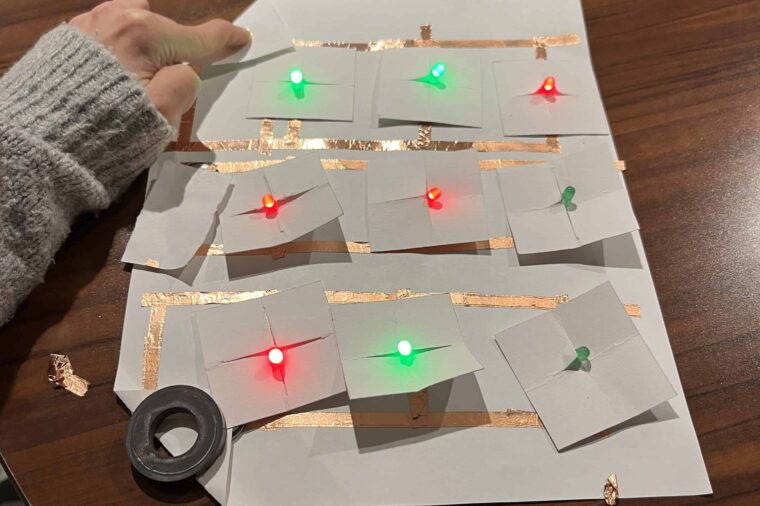Neurodivergent is a non-medical term which refers to the fact that some people’s brains function differently because their brains process information differently in a way that is not typical of most individuals. People who identify as neurodivergent most commonly are those who exhibit symptoms of ADHD, autism, or dyslexia. Often, children who are neurodivergent can struggle with their eye-hand coordination, fine motor skills, ability to remain focused for long stretches of time, working memory, and the ability to transition quickly between tasks. Additionally, neurodivergent children often may have difficulty with sensory overload, cognitive processing, and regulation of emotions and anxiety. Consequently, I hope to encourage neurodivergent children to cultivate computational thinking skills and puzzle solving skills through gameplay with digital circuits. I hope that through a game which children are already familiar with, like Tic Tac Toe, this will inspire students to gain greater self-confidence and self-expression in building and assembling circuits.
My project idea underwent numerous evolutions. I initially came into PCE knowing that I wanted to combine my interests in accessibility, computer science, and disability studies, but was not really sure how to go about it. I think in the beginning, I felt a little nervous about reaching out and asking for help, but subsequently realized that asking for help is good. It was only in Week 6 and Week 7 where I solidified my idea to work on creating an accessible, intellectually engaging, and fun game for neurodivergent children. I settled on Tic Tac Toe because it was a game which many young kids had prior experience with and exposure to.
I first used copper tape, LED lights, paper, and 3 voltage batteries to create a paper tactile version of the Tic Tac Toe game board. Parallel circuits and series circuits were the two design considerations I was choosing between — I ultimately settled on parallel circuits because they were more conducive to the amount of voltage in the battery, and they also matched the grid layout of the tic tac toe board. Using this method, I was able to construct a tic tac toe board which proved tactile and interactive with neurodivergent children.
Tic Tac Toe for Neurodivergent Kids



